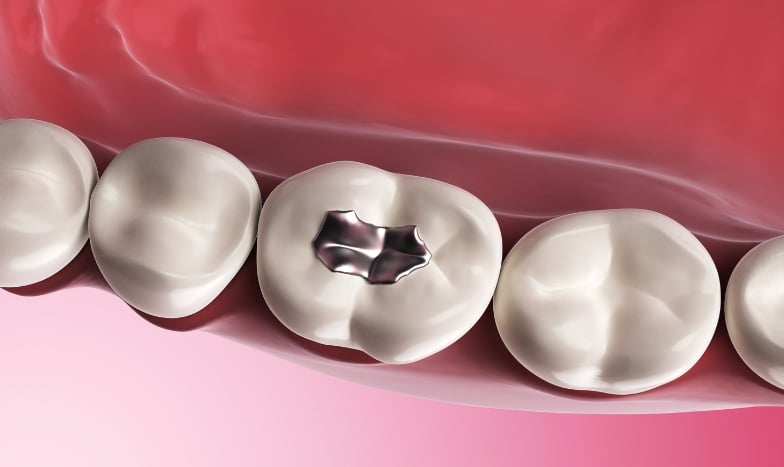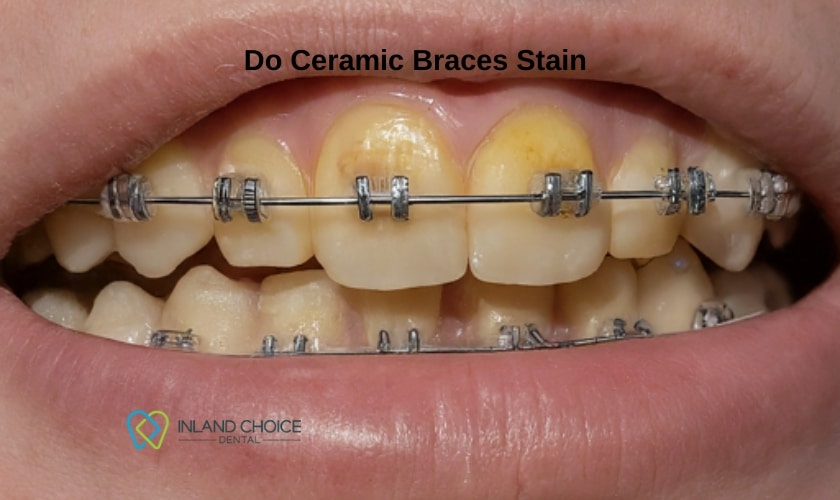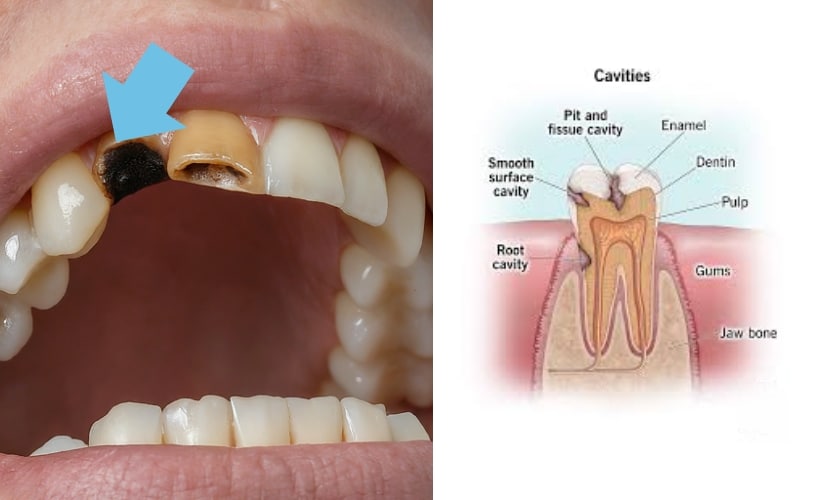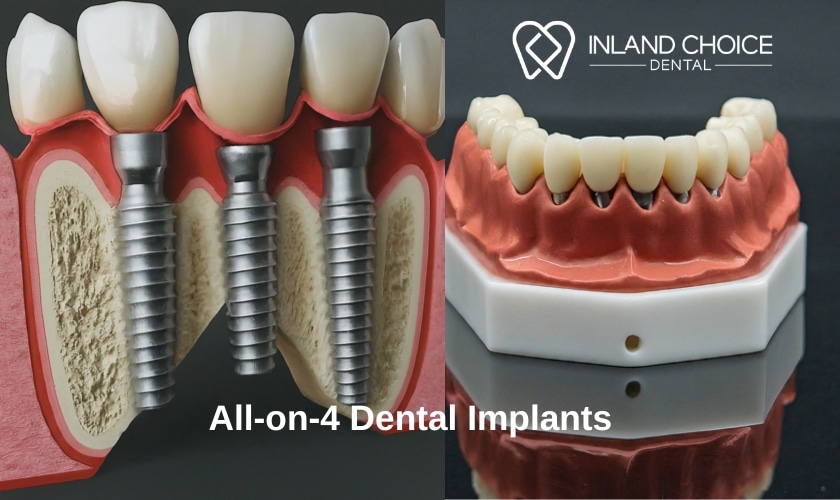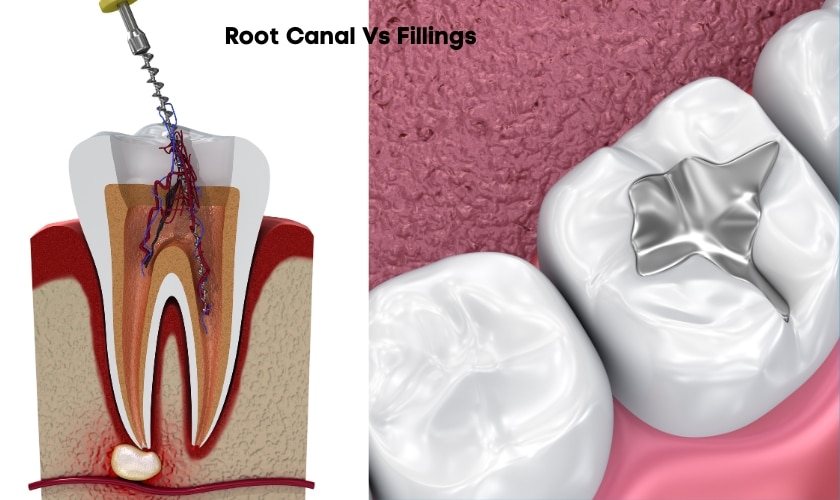
The Difference Between Root Canal and Fillings
Welcome to our dental blog! Today, we’re diving into the world of dental procedures and exploring the difference between root canals and fillings. Whether you’ve experienced tooth pain or simply want to expand your knowledge about oral health, this article will provide valuable insights. We recognize that selecting the appropriate course of treatment can be difficult. That’s why we’re here to break down these common procedures for you in a clear and concise manner. So let’s get started on demystifying root canals and fillings, so you can make an informed decision about your dental care!
What is a Root Canal?
A root canal is a dental procedure that treats the infected pulp inside the root of a tooth. The pulp is the soft tissue that contains blood vessels, nerves, and connective tissue. When the pulp becomes infected, it can cause pain, swelling, and other problems.
Here are some of the reasons why you might need a root canal:
- Deep decay that reaches the pulp
- A cracked or chipped tooth that exposes the pulp
- Repeated dental procedures on the same tooth
- Injury to the tooth
It’s critical to visit a dentist right away if you experience any of these symptoms. Early diagnosis and treatment can help prevent the infection from spreading and save your tooth.
What is a Filling?
A dental filling is a material used to restore a damaged or decayed tooth. When tooth enamel, the hard outer layer, gets compromised by cavities or fractures, fillings step in to:
- Prevent further decay: They seal the exposed dentin, the softer underlying layer, from bacteria and acids that cause decay.
- Maintain tooth structure: Fillings help preserve the tooth’s original shape and function, allowing you to chew, speak, and smile comfortably.
- Restore aesthetics: Modern fillings come in tooth-colored options, blending seamlessly with your natural teeth for a discreet repair.
Types of Fillings:
Different materials suit various situations, and your dentist will recommend the best option based on the tooth’s location, severity of damage, and your preferences. Here are the most common types:
- Composite resin: These tooth-colored fillings are popular for their natural appearance and ability to bond directly to the tooth structure, requiring minimal removal of healthy tooth material.
- Amalgam: Traditionally used for its durability and affordability, amalgam fillings are a mixture of metals like mercury, silver, copper, and tin. However, their metallic appearance and potential health concerns have led to a decline in their use.
- Gold: Highly durable and biocompatible, gold fillings offer excellent longevity but come at a higher cost.
- Ceramic: Esthetically pleasing and strong, ceramic fillings are often used for larger restorations like inlays and onlays. However, they require more extensive tooth preparation compared to composite fillings.
Fillings remain the most common dental procedure in the United States, with an estimated 130 million placed annually. According to the National Institutes of Health (NIH), over 90% of adults aged 20–64 have at least one filling.
Procedure of Root Canal and Filling
While both root canals and fillings address dental issues, they target different problems and involve distinct procedures. Now let’s examine each in more detail:
Root Canal Procedure:
Preserves a severely infected or damaged tooth by removing the infected pulp, cleaning the root canals, and sealing them to prevent further infection
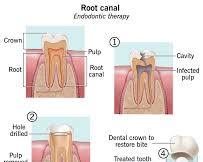
Guide of root canal procedure
Steps:
- Numbing: Local anesthesia numbs the area around the tooth.
- Access Creation: A small opening is made in the crown of the tooth.
- Pulp Removal: Infected pulp, nerves, and blood vessels are carefully removed from the pulp chamber and root canals.
- Cleaning and Shaping: Tiny instruments clean and shape the root canals to remove any remaining debris and prepare for filling.
- Filling: The cleaned canals are filled with a biocompatible material (gutta-percha) to seal them and prevent future infection.
- Sealing: The access hole is temporarily sealed with a filling material.
- Crown Placement: In most cases, a permanent crown is placed on the tooth to restore its strength, function, and aesthetics. This typically happens in a separate appointment.
Recovery:
- Some discomfort is normal after the procedure and is manageable with pain medication.
- To monitor healing and place the permanent crown, the dentist requires follow-up appointments.
- With proper care, a root canal-treated tooth can last for many years.
Filling Procedure:
Restores a tooth with minor to moderate decay confined to the enamel or dentin, preventing further damage and preserving tooth structure.
Steps:
-
- Numbing: Local anesthesia may be used for comfort, depending on the extent of the cavity and patient preference.
- Decay Removal: The dentist removes the decayed portion of the tooth using a drill or laser.
- Cleaning: The area is thoroughly cleaned to remove any remaining debris.
- Filling Placement: Dentists fill the cavity with a biocompatible material such as composite resin, amalgam, or ceramic, considering factors like size, location, and desired aesthetics.
- Shaping and polishing: Dentists shape and polish the filling to match the surrounding tooth structure and ensure a smooth, comfortable bite.
Consult your dentist for a proper diagnosis. They will examine your tooth, take X-rays, and assess the extent of damage to determine the right approach. Generally:
- Choose a root canal
- If you have severe pain, swelling, or pus drainage around the tooth.
- If an X-ray reveals infection in the pulp or surrounding bone.
- If you have a chipped or cracked tooth exposing the pulp.
- Choose a filling:
- If you have mild to moderate pain or sensitivity in the tooth.
- If an X-ray shows decay confined to the enamel or dentin.
- If you have a small chip or crack not affecting the pulp.
Choosing between a root canal and a filling depends on individual circumstances as well as professional advice from your dentist at Inland Choice Dental. They will thoroughly examine your condition and provide recommendations based on factors such as the severity of damage or disease progression and your overall oral health status.

